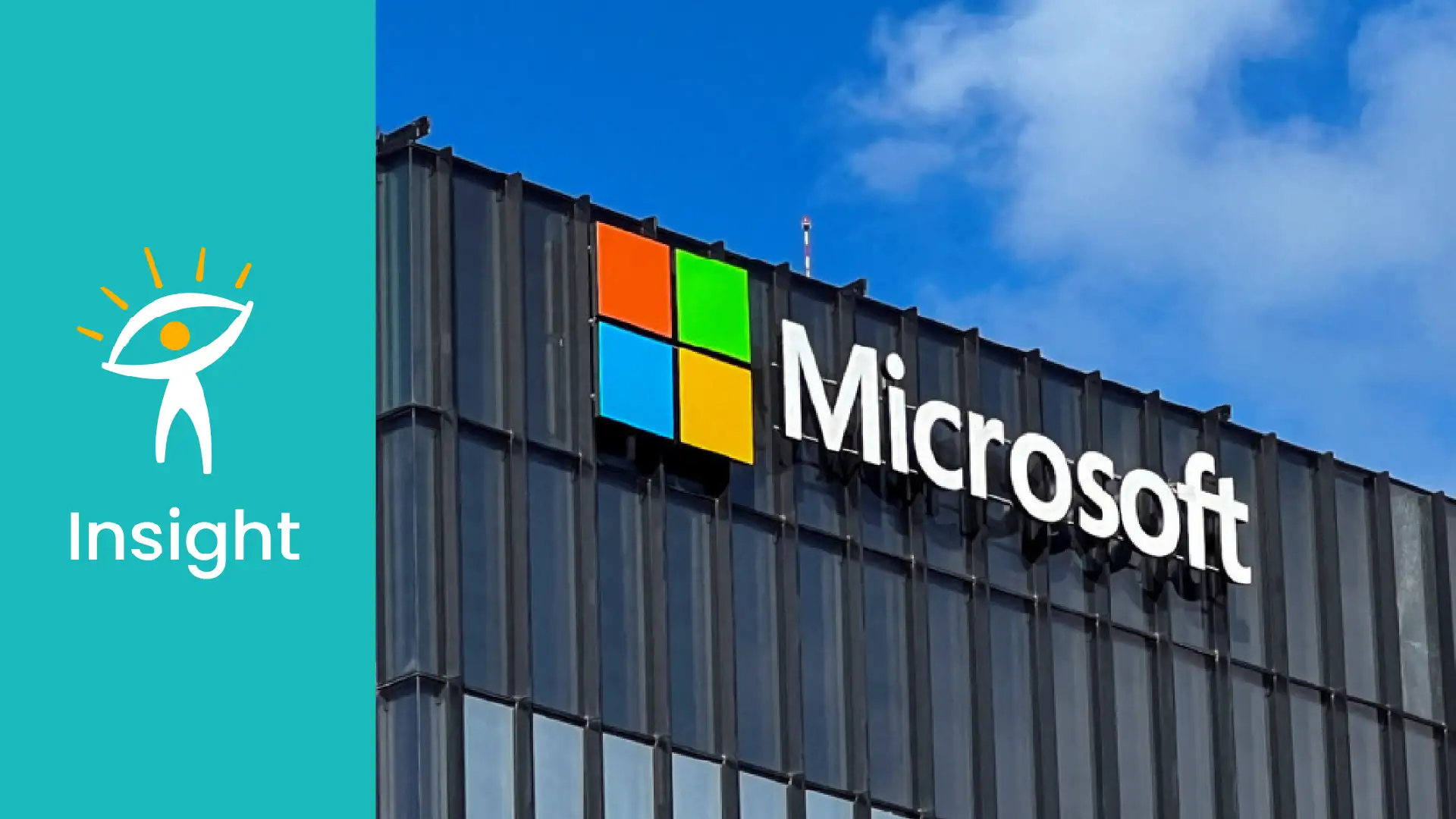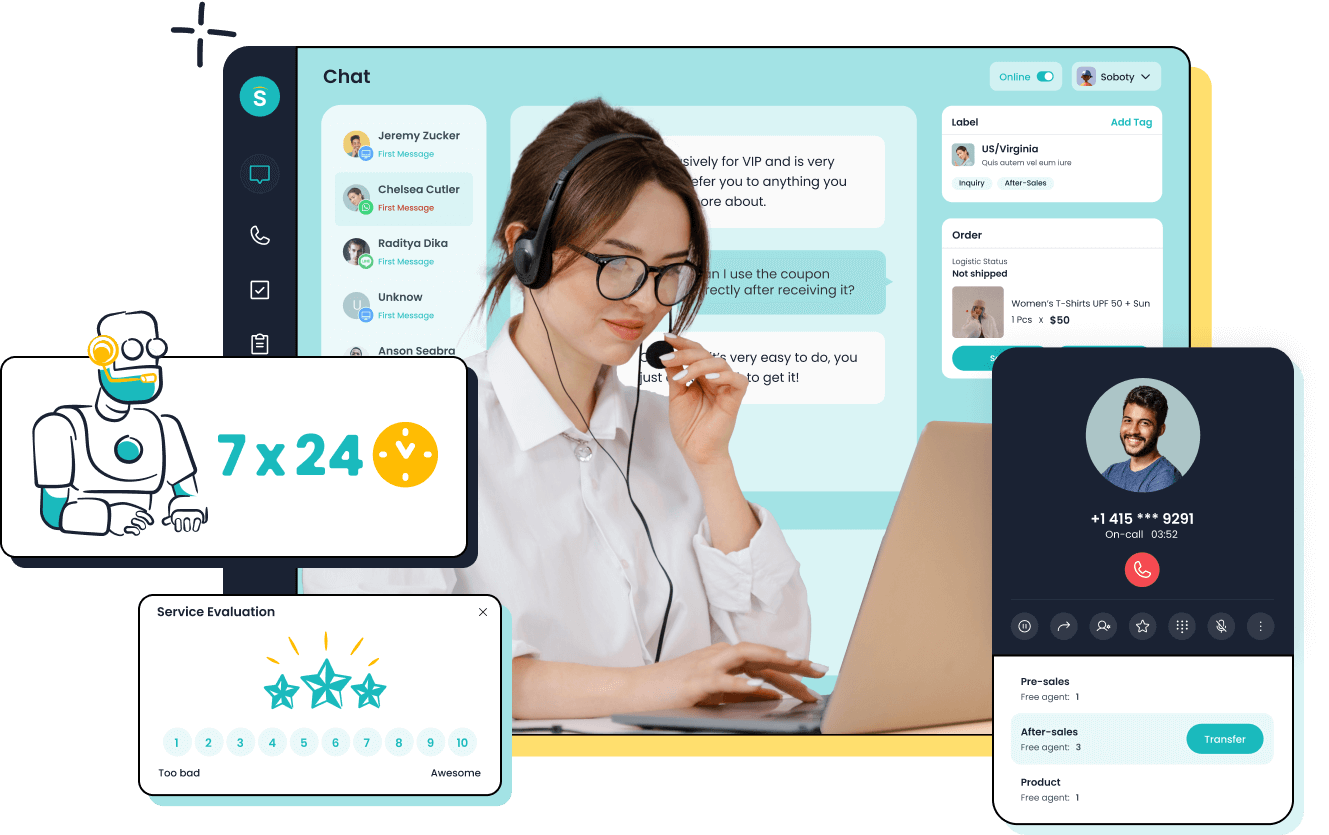Microsoft’s influence extends far beyond its software products. It operates in over 190 countries as of 2023 and employs more than 220,000 people.
Almost everything we use today depends on some form of Microsoft product or service; from the operating systems running our computers to the cloud infrastructure that keeps businesses worldwide connected.
Microsoft’s impact on the tech industry is immeasurable. The company’s innovations have not only shaped the development of personal computing but also set the standard for enterprise software, cloud computing, and AI.
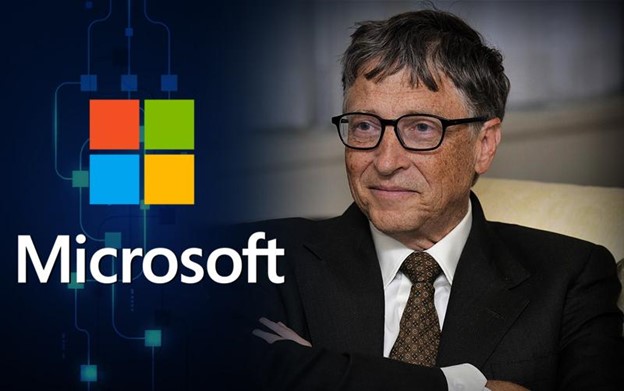
As Bill Gates once remarked, “We always overestimate the change that will occur in the next two years and underestimate the change that will occur in the next ten.”
This blog post analyzes Microsoft’s corporate structure, customer support strategies, innovative technologies, internal systems, and how advanced solutions enhance customer support through Sobot.io.
1. The Genesis and Growth of Microsoft
The Microsoft story started in 1975 when two childhood friends, Bill Gates, and Paul Allen, had a shared dream of having a computer on every desk and at every home.
Gates and Allen’s first breakthrough came when they produced an edition of the BASIC programming language for MITS’ microcomputer kit Altair 8800. Source.
Success here represented the birth of Microsoft (originally “Micro-Soft” from “microcomputer” and “software”). The company’s revenue for 1975 was around $16,000, which formed the foundation for one of the most successful companies in history. Source.
In 1981, the organization launched its first important product, MS-DOS which became the industry standard for personal computing. By 1985, Microsoft was generating annual revenues of $140 million. Source.
Key Milestones and Achievements
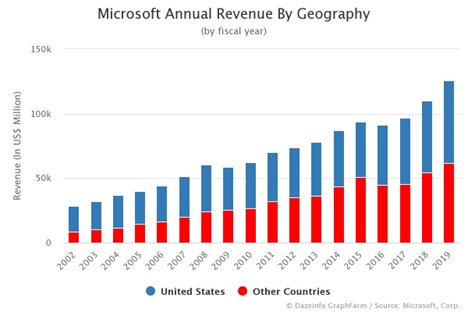
(Image Source: dazeinfo)
The introduction of MS-DOS in 1981 marked Microsoft’s initial significant commercial achievement. This served as groundwork where by the early 1990s more than 100 million copies of MS-DOS had been sold to form a basis for launching Windows which is now known to be the most popular operating system worldwide. Source.
Moreover, in 1989, Microsoft Office was introduced further reinforcing its dominance over other software programs in the market today. The suite combined Word processors such as Word Excel and PowerPoint among others establishing themselves as standard applications. As of 2023, global users of Microsoft Office are above twelve billion people. Source
In 2016, Microsoft acquired LinkedIn for $26.2 billion, marking its entry into the professional networking space. This acquisition allowed Microsoft to integrate LinkedIn’s vast data and user base with its enterprise products, enhancing value for business customers. Source.
In 2018, Microsoft acquired GitHub for $7.5 billion. GitHub, the world’s largest platform for software development and collaboration, reinforced Microsoft’s commitment to open-source software and strengthened its ties with the global developer community. Source.
2. Microsoft’s Business Ecosystem

(Image Source: Micorosft.com)
Microsoft can be broadly categorized into three major sections, namely Software, Hardware, and Services. Each of these sections plays an important role in Microsoft’s overall strategy and contributes considerably to its revenues.
Windows
Among all of the Microsoft products, Windows is certainly the most iconic one. It was released in 1985 and has since grown to become the most worldwide operating system. The market share of Windows on desktop operating systems as of February 2024 stands at 72%. Source. According to recent reports, Windows 10 alone had over 1.5 billion active devices across the world highlighting it is massive penetration among consumers and business participants. Source.
Microsoft Office
Another cornerstone of Microsoft’s software empire is the Microsoft Office suite. Launched in 1989, Office Suite became a de facto standard for productivity tools which combined Word, Excel, and PowerPoint as a single package. By 2023, this product had realized more than 320 million users globally hence becoming ubiquitous in both corporate and education environments Source.
Azure
Microsoft Azure is a leading cloud computing platform that provides various services such as compute power, storage space, and analytics among others. There are over 200 products incorporated in Azure’s wide-ranging portfolio which assist anything from basic website hosting to intricate machine learning applications The platform’s ability to support scalable and flexible solutions has made it a preferred choice for businesses seeking to leverage cloud technology for innovation and growth.
Xbox
Microsoft’s venture into the gaming industry began in 2001 with the launch of the original Xbox console. Since then, Xbox has become one of the most successful gaming platforms in the world. As of 2023, the Xbox ecosystem, including consoles, Xbox Game Pass, and Xbox Live, has over 7.5 million units sold. Source. The success of Xbox is not only measured by its sales but also by its impact on the gaming industry.
Surface
The Surface brand ranges from tablets to laptops and hybrid devices that are designed to be fully integrated with Windows and other Microsoft services. For versatility and performance, the Surface Pro and the Surface Laptop models stand out, appealing to professionals as well as casual users. There is no doubt that in 2023, the Surface brand will remain a major player in the 2-in-1 notebook market segment, with Microsoft using its hardware to demonstrate the capabilities of Windows and other software.
3. Customer Service Philosophy
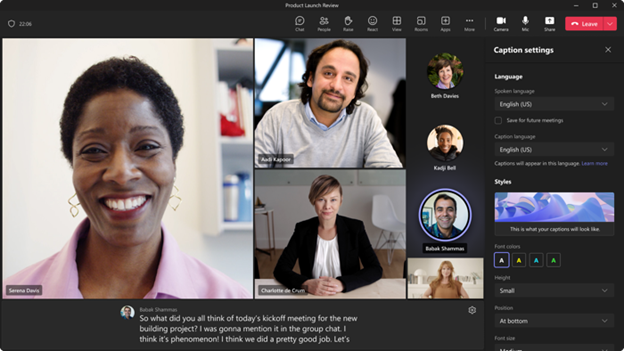
Microsoft Live Chat. Image (source: Microsoft )
Bill Gates once said “Your most unhappy customers are your greatest source of learning,” emphasizing the importance of listening to and learning from customer feedback. This philosophy guides Microsoft’s approach to customer service, driving continuous improvement and innovation in its support processes.
Microsoft strives to have long-term customer relationships through excellent service delivery and personalized support.
Furthermore, there are numerous educational resources offered by Microsoft through platforms such as Microsoft Learn and Customer Service Insights Module which empower users to maximize return on investment from their products.
Satya Nadella rightly noted that “The true measure of a company is how it handles a crisis.” This perspective underscores Microsoft’s commitment to upholding high service standards even when faced with challenges.
Customer Service Philosophy In Action
A notable example of Microsoft’s customer-centric philosophy is the “Microsoft Customer Co-Creation Program.” This initiative involves customers directly in the development of new products and features. By soliciting feedback and insights from users, Microsoft ensures that its offerings are aligned with the real needs of its customers. Source.
This program not only enhances the relevance and effectiveness of Microsoft’s products but also makes customers feel valued and heard, which is key to building lasting relationships.
Another case is Microsoft’s response to the COVID-19 pandemic. With businesses worldwide transitioning to remote work, Microsoft played a critical role in supporting this shift by offering enhanced customer support for its collaboration tools like Microsoft Teams.
Understanding the urgency and the challenges faced by organizations, Microsoft provided extended resources, including 24/7 customer support, webinars, and online resources, ensuring that businesses could smoothly transition to new working environments.
4. Advanced Customer Contact Centers

Microsoft Customer Support Center. (Image source: Microsoft)
Customer Services Channels
1. Omnichannel Support: Multiple support channels including phone, email, live chat, and social media
Microsoft’s commitment to providing its customers with the best possible service is seen in its advanced multi-channel customer care systems. This methodology ensures that clients can get help through several forums each of which is tailored toward a different audience.
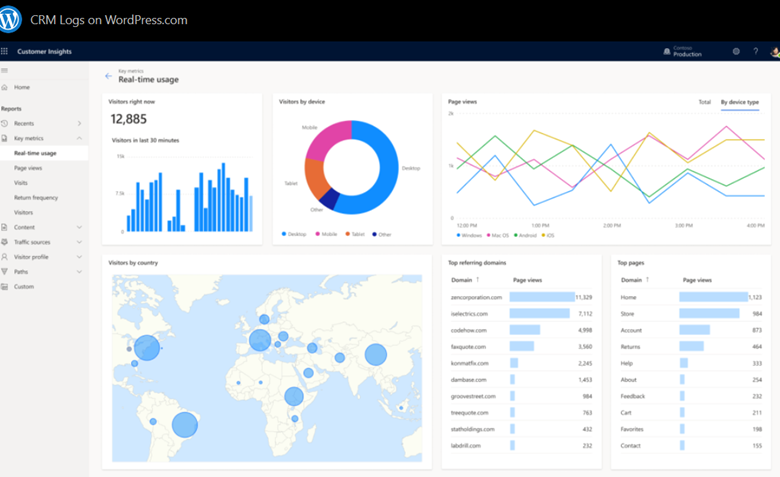
Microsoft Customer Service Insight. (Image Source: Microsoft Dynamics)
There are some key channels offered under Microsoft’s omnichannel support system. The company’s customers can use normal tools for accessing consumer aid like telephone or email.
According to a Microsoft report, 66% of consumers now expect real-time solutions across all channels hence making it essential to have an omnichannel customer support strategy. Source.
Having live chat on their website is a huge win for Microsoft because it facilitates immediate assistance. In addition, it allows users to interact directly with support staff as well as fosters quick resolution of issues, and provides a more dynamic approach to problem handling.
A study by Forrester found that among all the available customer service platforms, live chat has the highest satisfaction levels at 69%. Source.
2. Microsoft Support and the Microsoft Community Forum
Microsoft has developed dedicated support websites to complement its direct support channels that serve as extensive self-service resources. The Microsoft Support Portal is a centralized hub where users can find troubleshooting guides, FAQs, and product documentation. This portal is designed to empower users to resolve issues independently, reducing the need for direct intervention and enhancing the overall efficiency of the support process.
The Microsoft Community Forum offers a platform for users to connect, share experiences, and seek advice from both Microsoft experts and other community members. This forum fosters a collaborative environment where users can find solutions through peer support and expert input.
3. Team Structure and Organization
Microsoft’s customer contact center structure is well organized to deal with various customer inquiries and ensure that the right persons are assigned these tasks.
Moreover, Microsoft’s 2023 report revealed that more than 105,000 employees contributed $242 million including company matching to over 35,000 nonprofits spanning 116 countries. Source.
Furthermore, the Microsoft Global Helpdesk team supports more than 170,000 employees and partners worldwide. Source.
4. Integration of Remote Work and Hybrid Models
The COVID-19 pandemic brought unprecedented challenges prompting Microsoft to rethink its customer service operations.
In addition, Microsoft’s hybrid model combines remote work flexibility with in-office operations’ collaborative benefits which has been impactful in terms of sustaining high productivity and satisfaction for their customers.
Microsoft reports that 53% of people are contemplating a shift to hybrid work in the year ahead. To guide leaders through this period of uncertainty, the 2022 Work Trend Index offers insights drawn from a study of 31,000 individuals across 31 countries, combined with an analysis of trillions of productivity signals in Microsoft 365 and labor trends from LinkedIn. Source.
As said by Bill Gates “The future of work is remote; the future of leadership is empowerment.”
5. Microsoft FastTrack Program: A Roadmap to Seamless Product Adoption
Initially established in 2014, the FastTrack Program was created in response to increasing complexity in IT environments and the urgent need for companies to adopt new technologies faster.
This program provides assistance and resources tailored specifically for organizations deploying such products as Office365, Azure, or Dynamics365 on a minimal disruption basis.
Satya Nadella has stressed customer success many times throughout his tenure as Microsoft CEO saying “Our success is measured by the success of our customers.”
The FastTrack Program from Microsoft is a customer success service for the Microsoft cloud that has supported over 60,000 customers till today. Source.
5. Leveraging Technology for Enhanced Service
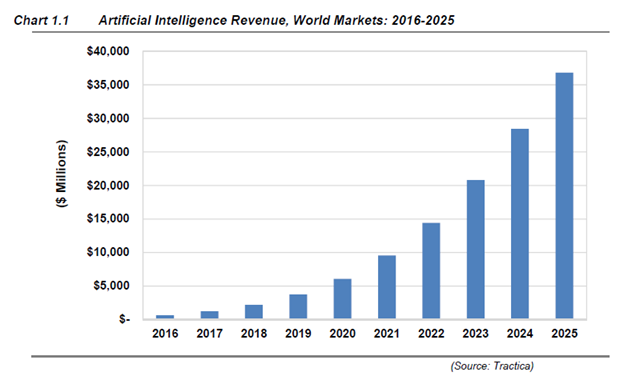
Microsoft AI Revenue. (Image Source: Microsoft AI)
Innovative Use of AI and Cloud Computing: Azure
Azure has grown rapidly to become a leading cloud service provider, competing head-to-head with Amazon Web Services (AWS) and Google Cloud. By 2023-2024, Azure held a 23% share of the global cloud market, contributing significantly to Microsoft’s revenue growth. Source. The platform offers a wide range of services, including computing power, storage, and advanced analytics.
Integrated with Microsoft Teams and Dynamics 365, Azure Bot Services enables businesses to provide instant support across multiple platforms. This service supports chatbots on websites, mobile apps, and social media channels.
Microsoft’s deployment of chatbots through Azure has led to substantial improvements in customer support metrics, including a 50% reduction in response times. Source.
According to a recent report, Microsoft Azure holds approximately 25% of the global cloud infrastructure market, making it a leading player in the industry. Source
6. Internal Systems and Employee Development

(Image Source: Microsoft Team)
As Bill Gates says, “We give them a lot of training on the job, we put them right to work.”
Microsoft’s recruitment process contains multiple evaluations to determine if an individual fits in the organization and is technically competent. This involves several interviews that include technical tests and behavioral questions that are tailored specifically for the same position under consideration. As explained by corporate on its Careers Page, this should help weed out those who may not possess the skills required by the role and may not be a good fit for the company culture. Source.
Microsoft Training Programs: Popular Learning Paths and Modules
- Microsoft Learn: Microsoft Learn is an online platform where you can get free self-paced courses about Azure, Microsoft 365, Power BI, etc. These courses are designed with different levels of expertise in mind and contain modules/ learning paths/ hands-on labs.
- Dynamics 365: Certification targets professionals who use Dynamics 365 directly to enhance customer service operations. According to Microsoft, individuals who have achieved this certificate have shown competence in handling complicated customer service problems and know how to fully use Dynamics 365. Source.
- Microsoft Power Platform Fundamentals: The basic course has been developed around four major elements of the Dynamic CRM Service module which consists of Power BI, Power Apps; Power Automate, and Power Virtual Agents that will make service processes efficient through automation. These lessons teach professionals how to automate workflows using the Power Platform, build custom applications with it as well as create real-time data visualization dashboards.
- Microsoft Certified Professional (MCP): Such certifications validate expertise related to Microsoft technologies such as Azure Administrator or Modern Desktop Administrator Expert among others.
- Microsoft Virtual Training Days: These are online events that happen over one or two days with specific focus areas like Azure or Microsoft 365; they could also involve practical assignments together with question-and-answer sessions sometimes.
7. Future Trends and Innovations
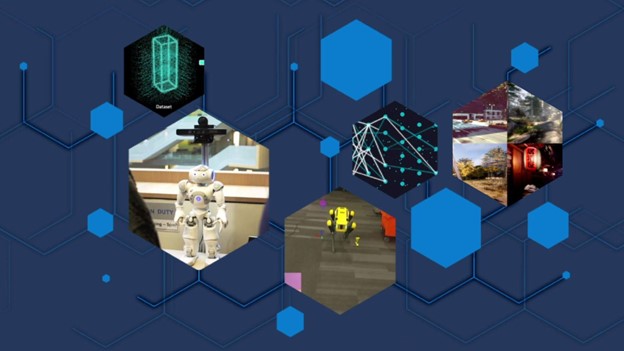
(Image Source: Microsft Research)
AI-Driven Support Systems
Microsoft’s customer support strategy now encompasses AI and machine learning as vital features, with the firm spending on these technologies being a reflection of the general trend in the industry toward automating and personalizing customer services.
By 2025 Microsoft hopes to have more than 90% of its customer interactions handled by AI. Source. Microsoft’s AI-powered tools, such as the Azure AI and Dynamics 365 Virtual Agent, have been instrumental in reducing response times and improving the accuracy of customer service responses.
Proactive Customer Service
Proactive customer service is another trend gaining traction within Microsoft’s ecosystem. Instead of waiting for customers to reach out with problems, Microsoft is increasingly using predictive analytics to anticipate issues and resolve them before they escalate. For example, Microsoft’s Azure-based monitoring tools can identify potential service disruptions or security threats and automatically notify customers, preventing downtime and improving overall customer satisfaction.
Personalization Through Data Analytics
Another emerging trend in Microsoft’s customer service approach is the use of advanced data analytics to personalize customer interactions. This trend aligns with the broader industry movement towards hyper-personalization, where businesses use data to create more meaningful and individualized customer experiences. Microsoft’s investment in tools like Azure Synapse Analytics is a testament to its commitment to this trend.
Omnichannel Support
One of the most significant emerging trends is the shift towards omnichannel support, where customers expect seamless service across various platforms, including social media, live chat, and mobile apps. According to a report by Salesforce, 76% of customers now expect consistent interactions across departments and channels, highlighting the importance of a unified customer service strategy.
Empowering Customers with Self-Service
Microsoft has developed extensive online resources that allow customers to search for answers to their queries without needing to contact support. These resources are constantly updated to ensure they remain relevant and useful. According to a Forrester report, 72% of customers prefer using a company’s website to get answers to their questions rather than contacting support directly. Source.
8. Conclusion
The growth of Microsoft as a software company into a global technology giant confirms that it believes in innovation as well as excellence. This demonstrates Microsoft’s commitment to innovation and excellence, from when it was just a small software company until now that it has grown into one of the largest technology providers globally.
Microsoft stays ahead of emerging trends and technologies, being at the forefront of shaping the future of technology and customer service. This commitment to progress has only served to reinforce its position as a leader in the industry while encouraging advancement throughout it.
Sobot.io: Enhancing Customer Service in E-Commerce
A provider of advanced customer service solutions, Sobot.io provides a range of tools to enhance customer interactions and streamline support processes. With its innovative AI-driven chatbots, live chat capabilities, and efficient ticketing systems, Sobot.io is revolutionizing how companies interact with their customers and handle service requests.
Overview of Sobot.io’s Capabilities and Technology
The core of Sobot.io’s offering includes:
AI-Driven Chatbot: Leveraging artificial intelligence, Sobot.io’s chatbots provide automated, real-time assistance to customers. They are programmed to comprehend as well as respond to many different questions for immediate resolution leaving human agents free to take on more complicated concerns.
Live Chat: Live Chat- Sometimes businesses need more personal support thus they can introduce instant communication that happens in real time through the live chat feature by Sobot.io. This is an essential tool when dealing with emergencies and providing directions for better consumer engagement through prompt and direct interaction.
Ticketing System: Sobot.io’s ticketing system organizes and prioritizes customer requests, ensuring that every issue is tracked and resolved systematically. This feature helps manage high volumes of support inquiries, improving response times and ensuring that no customer query falls through the cracks.
Integration with Major E-commerce Platforms
Amazon:
The integration makes it easier for sellers to handle questions or support requests directly from Amazon. The integration streamlines communication, making it easier to handle queries and support requests directly within the Amazon ecosystem.
Walmart:
This integration supports Walmart’s commitment to excellent customer service by providing tools that facilitate efficient and responsive customer interactions.
Shopify:
Since Shopify is among the leading e-commerce platforms; its integration with Sobot enables merchants to get enhanced capabilities in terms of supporting clients better. Sobot.io helps online merchants operating Shopify stores manage customer inquiries quickly hence making their shopping experience enjoyable.
(Cover image from China Daily. The information in the article is collected from public channels. If the data or pictures are infringing or inaccurate, please contact us to delete or modify it.)

